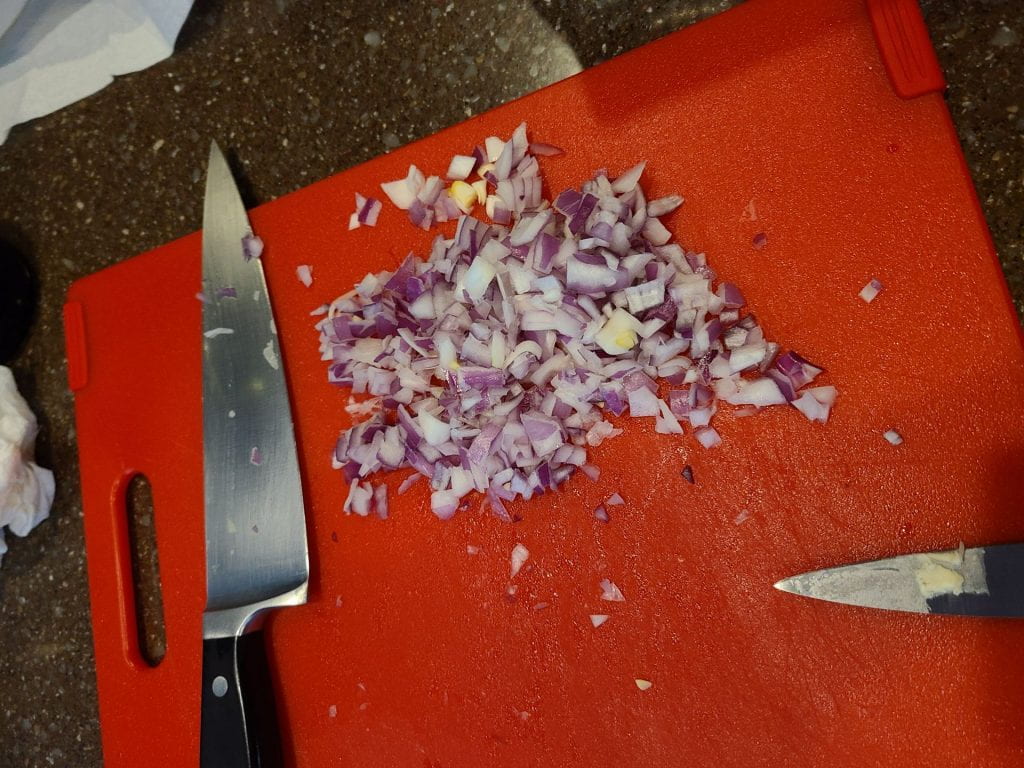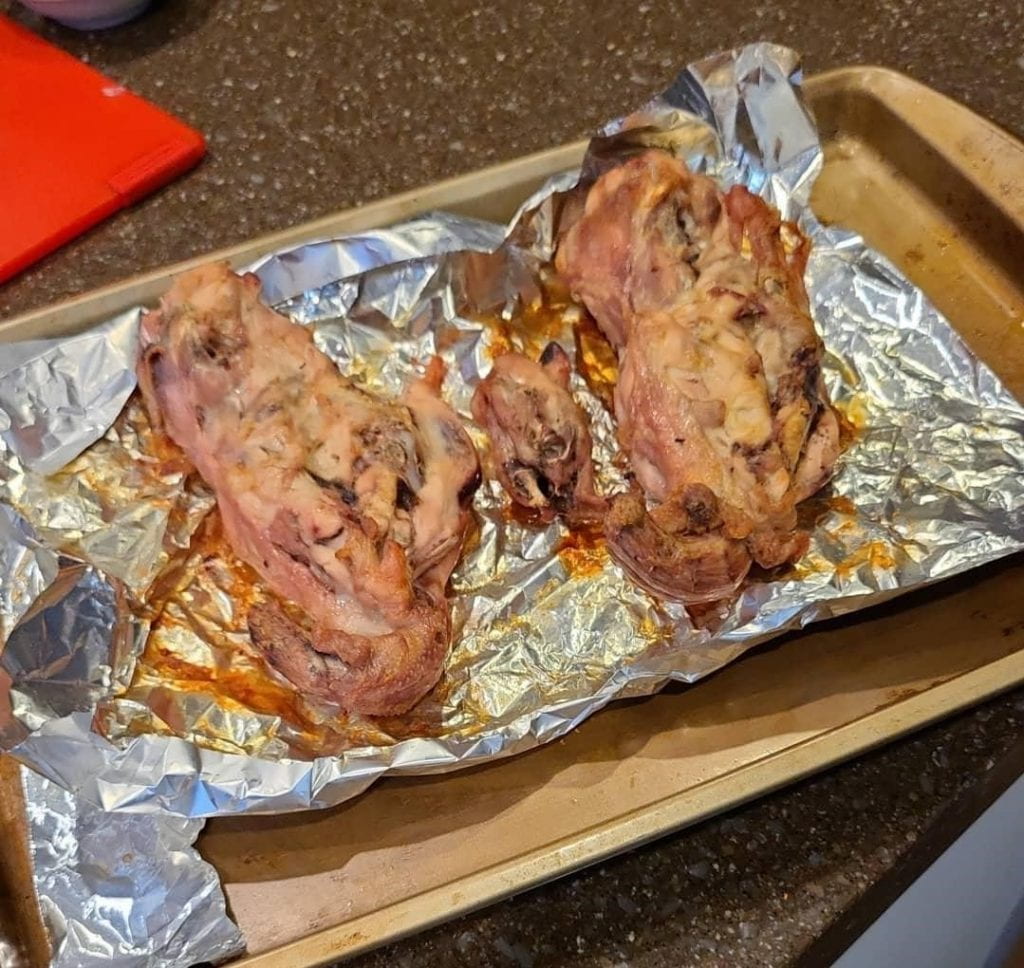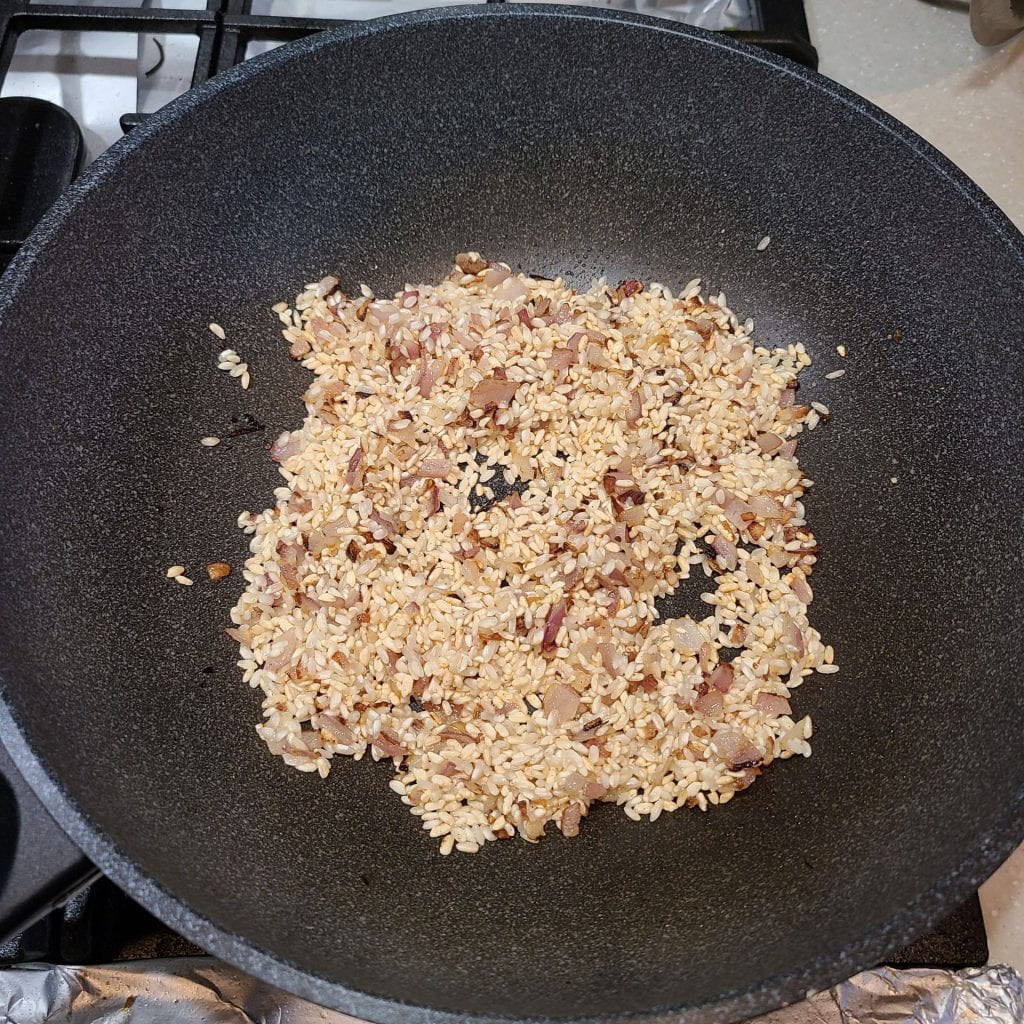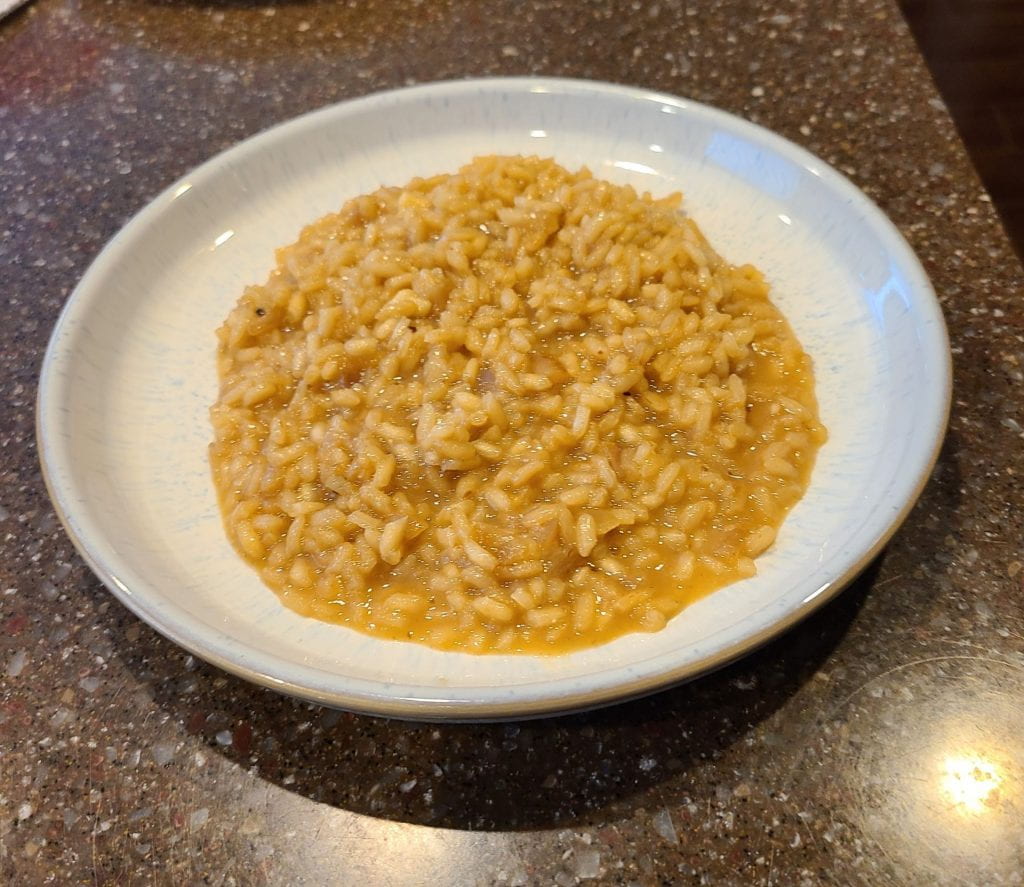Over spring break, I’ve been practicing making a few new food items. One such food item would be homemade chicken stock, which my mentor has provided me with his own recipe for.
First, the recipe calls for you to get roast one chicken carcass in the oven, but since the chicken carcasses I had were quite small, I had to use two. While the carcasses were roasting, I cut up my mirepoix and weighed my herbs and spices. A mirepoix is essentially an aromatic flavour base made by lightly cooking or sweating onions, celery, and carrots. For my mirepoix, I use two onions, one large carrot, and 2 large sticks of celery. This resulted in a mirepoix that was roughly 50% onion, 25% carrot, and 25% celery. However, as we will see in the end, this was too many vegetables for how many carcasses were put into this stock, and it somewhat covered up the chicken flavour.
After the chicken was done roasting, I started sweating the mirepoix in a large pot with olive oil. I sweated it until the onions turned translucent and then added the roasted chicken carcasses, the spices, and the herbs, mixed them around a bit, before adding enough cold water to cover everything. I made a note of how much liquid there was currently in the pot before bringing the entire mixture to a boil, from which I then turned down to a simmer, letting it sit on the stove for the next couple of hours or until the liquid reduced by about a third.

After it has reduced, I seasoned the broth with salt to taste. I then strained it into a large stainless steel mixing bowl through a fine mesh colander a bit at a time so that I would have time in-between each straining to use a spoon to squish the solids, really squeezing out every last drop of stock. After it was all strained, I used a fat skimmer to get rid of any fat on the surface of the broth.
I tasted the broth and I was blown away by how much better it tasted than store-bought stock. There were much stronger flavours and there was also a deeper depth of flavours. It was slightly thicker in texture as well compared to storebought stock, due to all the collagen from the chicken that was dissolved into the stock, making the stock somewhat coat the mouth as you drink it. After placing it in the fridge, the stock resembled a loose jelly, and this is because of all the collagen in the stock. Collagen is what gelatin is made of, and thus it is no surprise that the stock would then have a jelly-like consistency after cooling down with a large amount of collagen that was dissolved into the stock from the chicken carcasses.
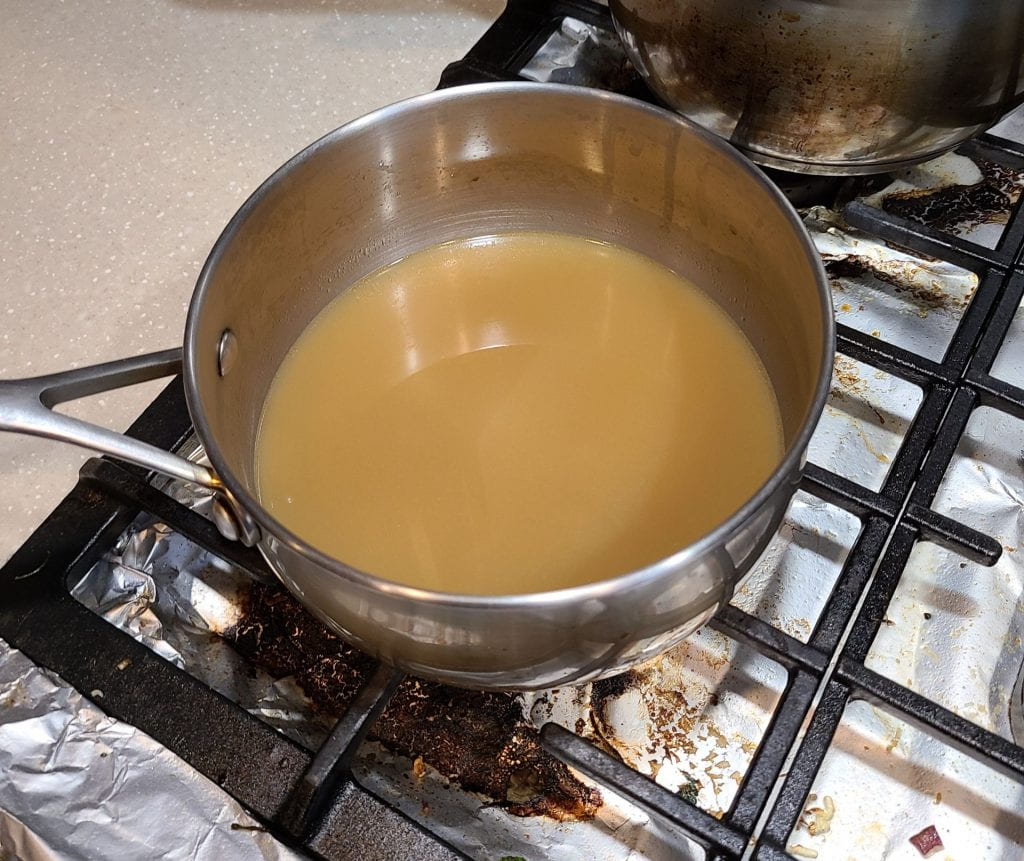
Using this stock, I decided to try making risotto again, hoping that it would taste better than last time. The recipe I used is exactly the same as the one I showed in the last blog post, except for a few changes. The first change in how I made the recipe was that I actually used white wine to deglaze the rice, and the second change is how I applied what I learned from cooking the risotto last time as well as the meeting between me and my mentor, such as making sure to actually toast the rice until I hear “popping” noises. This time, I also decided to not add any mushrooms so that the chicken stock’s flavour would be able to really shine.
Upon tasting the risotto I made this time, I found that two things were very off. First, the flavour from the white wine was very, very strong, and second, the parmesan flavour was also very overpowering, like my last attempt. During my meeting with my mentor, we both came to the conclusion that I should add less parmesan into my recipe, and also add a bit at a time so that I can taste it as I go. I concluded that the reason why the white wine’s flavour was so strong was that while I cut the recipe in half (to make less risotto), I forgot to also reduce the white wine amount to half as well, resulting in the white wine’s flavour to be really overpowering in the final dish. During the meeting, we also decided that it would be best for me to start working on the menu I am planning on making for my In-Depth final project. This way, my mentor would be able to help me work on the specific techniques and skills needed to make the dishes I want to make in the end. For example, since I’ve already decided that I want to make Tiramisu for my dessert course, my mentor has recommended that I practice tempering eggs, which is vital to making a good tiramisu.
Finally, I also tried making gnocchi for the first time over spring break. To make gnocchi, all you basically need is a few potatoes, an egg, and some flour. I used about 4 medium-sized russet potatoes, 1 egg, and about 3 cups of flour. For the potatoes, I was advised by my mentor during our meeting to bake them instead of boiling them to lessen the amount of moisture when I make the dough, as moisture is the enemy of gnocchi doughs. However, when mashing the potatoes, I wasn’t as thorough with the mashing as I should’ve been, which resulted in there being whole lumps of potatoes in the end dough. I also am not sure why, but the dough was very sticky throughout the entire kneading process, even adding 3 cups of flour to the dough. It is recommended to knead the dough as little as possible to create fluffy and light gnocchi, but I kneaded it too much I think, which resulted in a chewier dumpling. After I finished kneading, I cut the dough into 4 separate portions, rolling each of them out into rolls with a thickness slightly more than that of a cigar. I then cut the rolls into about a quarter-inch wide dumplings. I then shaped each of them a bit more by pushing them against the tines of a fork using my thumb, creating ridges on the gnocchi which are designed to help catch sauces better.
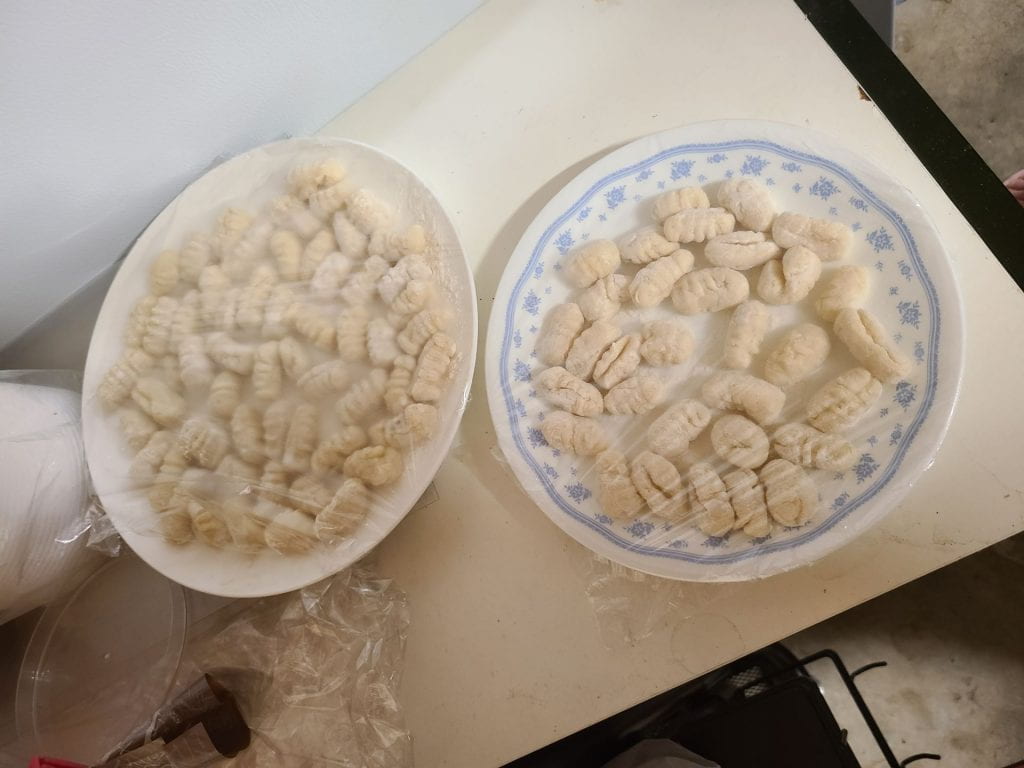
After shaping all the gnocchi, I placed some onto plates, covered them with plastic wrap, and placed them into the fridge to eat at a later date. I filled a pot with some cold water, adding salt to the water before bringing it to a boil. I then dropped the gnocchi into the water, boiling them until they all float to the top. On the side, I melted some butter in a pan and then dropped some sage into the butter, letting the butter-sage mixture become fragrant before dropping in the boiled gnocchi into the pan. I mixed it around a bit before just letting the dumplings sit there undisturbed for about 2 minutes to get crispy. After they became crispy, I seasoned them with some salt, and then plated the gnocchi onto a plate, grating some Parmigiano-Reggiano onto the gnocchi.
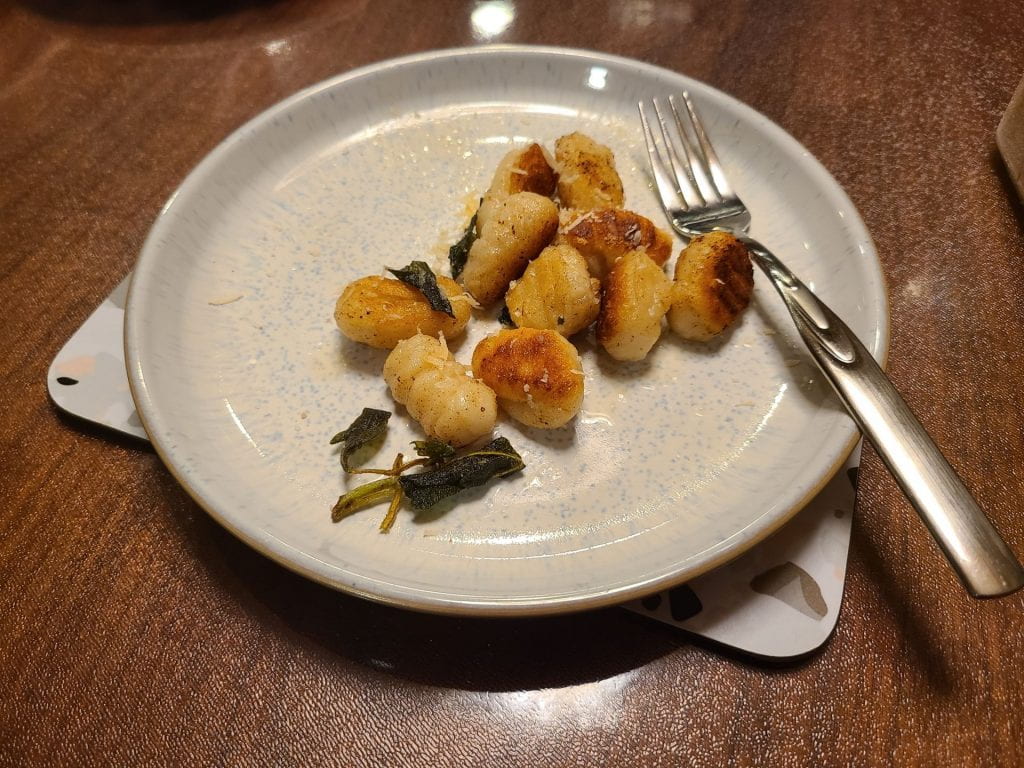
The gnocchi tasted very good, and the sage butter was very fragrant and nice too. I think for the next attempt, I will make sure to mash the potatoes more thoroughly and knead the dough less to create a more fluffy dumpling.
Questions for this post:
1. What has been your most difficult mentoring challenge so far? Why?
I think the most difficult mentoring challenge so far is getting enough meetings to happen. While my schedule is very open and fluid, my mentor’s schedule is quite busy. He is working as a chef in a restaurant that has recently opened about a month ago, and thus has a lot of work to do. It has been quite difficult so far in working together to find a time when we can have a meeting, but we are getting more and more efficient at securing meetings each time we need to have one. We’re learning from each time we coordinate a meeting, and we’ve managed to now get meetings slightly more frequently than we did at the start.
2. What is working well? Why?
Something that is working very well is how passionate I and my mentor are about cooking. This helps us to really get deep into our conversations about the topic and also have fun during our discussions. I’ve also been benefiting greatly from my mentor’s guidance, as with his guidance, I’ve been progressing quickly with my project, and have been getting many great recommendations to prepare myself for my final project. The guidance that my mentor has given me will allow me to achieve my goal of cooking a three-meal course by the end of In-Depth easier.
3. What could be working better? How can you make sure this happens?
Something that could be going better is my attempts at making risotto and my progress with my knife skills. Ways I can make sure that I improve in these two areas by the next post is by simply doing more practice. I can make more risotto to refine and hone my skill in making that dish. I’ve already identified what my current problems are in making the dish, so all I need to do now is just apply what I’ve learned to my next attempt, and keep on refining my attempts until I’ve got it down perfectly. For my knife skills, I can always just practice cutting with my knife more, and one such way I can get more opportunities to practice with a knife is by helping my parents more often in the kitchen with cutting ingredients. This way, I’ll be also able to ask my parents for tips and pointers in getting better knife skills as they will be right beside me as I use the knife.
Thank you for reading! Keep an eye out for my future In-Depth blog posts.
Dylan
